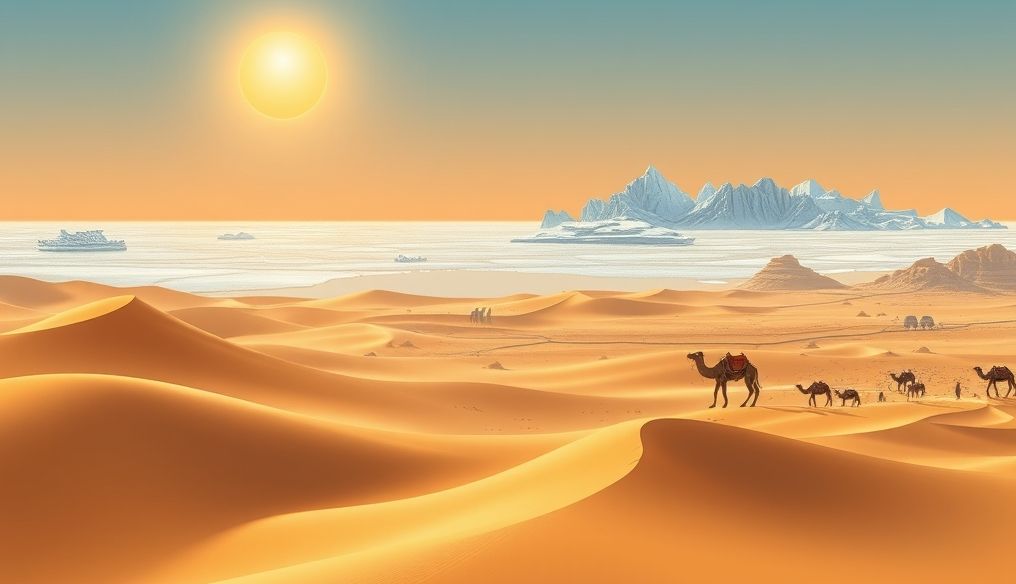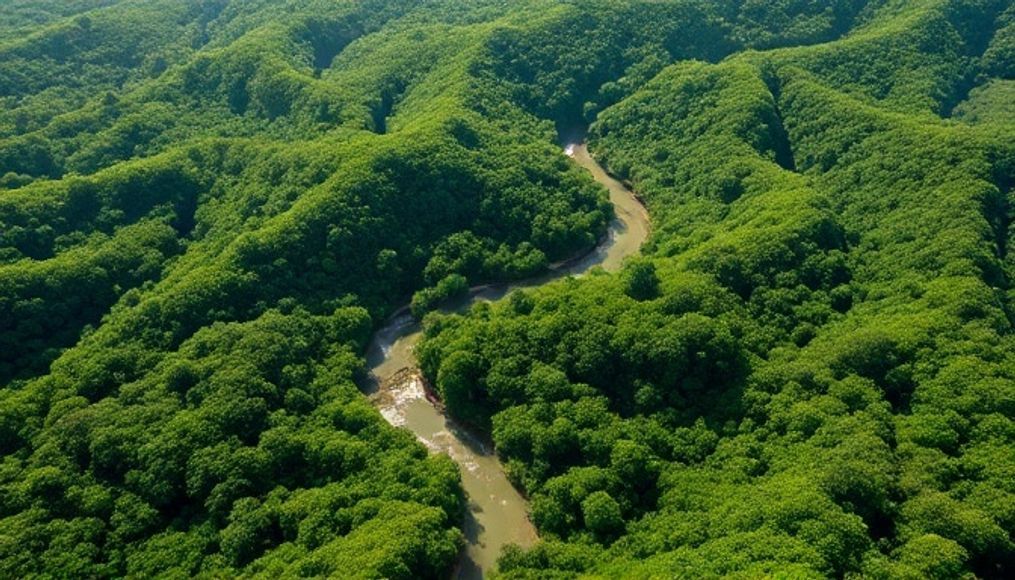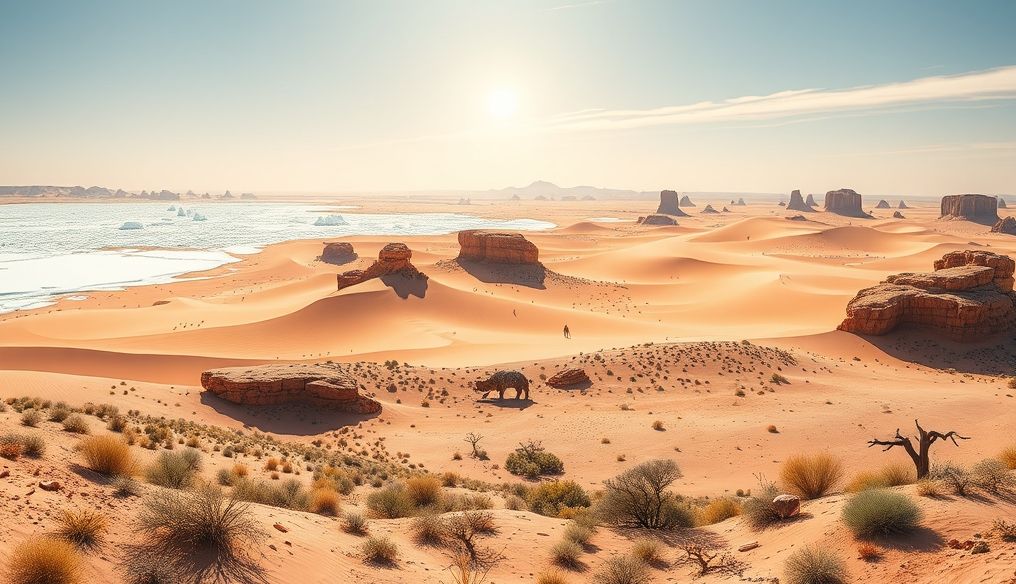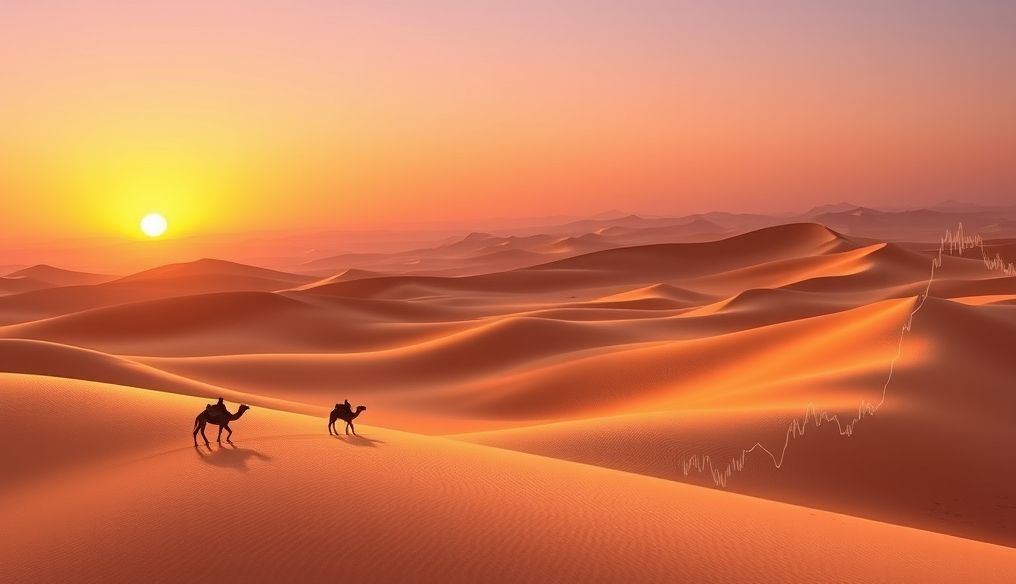What are the Largest Deserts in the World and What Distinguishes Them?
Deserts, those vast and arid landscapes, represent a significant portion of the Earth's surface. Despite their harsh conditions, they harbor unique biodiversity and rich cultural history. In this article, we will explore the largest deserts in the world, focusing on their distinctive characteristics and the challenges of life within them.
1. Antarctica: The Frozen Desert
It may seem strange to consider Antarctica a desert, but it is indeed the largest desert in the world. A desert does not necessarily mean scorching sand; rather, it means a region that receives very little rainfall, which applies to Antarctica.
Characteristics of Antarctica:
- Area: Approximately 14 million square kilometers.
- Climate: The coldest place on Earth, with temperatures dropping below -80 degrees Celsius.
- Precipitation: Antarctica receives less than 200 millimeters of precipitation annually, mostly in the form of snow.
- Wildlife: Despite the harsh conditions, some adapted organisms exist, such as penguins, seals, and certain types of algae.
- Scientific Importance: Antarctica is a natural laboratory for studying climate change, Earth's history, and astronomy.
2. Sahara Desert: The Sea of Sand
The Sahara Desert is the second-largest desert in the world and the largest hot desert. It stretches across North Africa, encompassing parts of Algeria, Chad, Egypt, Libya, Mali, Mauritania, Morocco, Niger, Sudan, and Tunisia.
Characteristics of the Sahara Desert:
- Area: Approximately 9.2 million square kilometers.
- Climate: Hot and dry, with significant temperature variations between day and night.
- Topography: Varies from vast sand dunes, rocky plains, and rugged mountains.
- Wildlife: Includes camels, desert foxes, scorpions, lizards, and many species of birds.
- Culture: The Sahara Desert has been inhabited by numerous civilizations throughout history, such as the Tuareg, known for their ability to survive and navigate the desert.
3. Arabian Desert: Cradle of Civilizations
The Arabian Desert is located in Western Asia, extending across most of the Arabian Peninsula. It includes parts of Saudi Arabia, Jordan, Iraq, Kuwait, Oman, Qatar, the United Arab Emirates, and Yemen.
Characteristics of the Arabian Desert:
- Area: Approximately 2.33 million square kilometers.
- Climate: Hot and dry, with high temperatures during the day and significant drops at night.
- Topography: Consists of sand dunes, rocky plains, and dry valleys.
- Wildlife: Includes Arabian camels, wolves, foxes, gazelles, and many species of birds.
- Historical Significance: The Arabian Desert is considered the cradle of ancient civilizations, such as the Nabataean civilization, and witnessed the emergence and spread of Islam.
4. Gobi Desert: Between China and Mongolia
The Gobi Desert is located in northern China and southern Mongolia. It is a cold desert, with temperatures dropping significantly in winter.
Characteristics of the Gobi Desert:
- Area: Approximately 1.3 million square kilometers.
- Climate: Cold and dry, with significant temperature variations between seasons.
- Topography: Consists of rocky plains, sand dunes, and mountains.
- Wildlife: Includes Bactrian camels, brown bears, wolves, and many species of birds.
- Historical Significance: The Gobi Desert was part of the ancient Silk Road and witnessed the passage of many trade caravans.
5. Kalahari Desert: Life in the Heart of Drought
The Kalahari Desert is located in southern Africa, encompassing parts of Botswana, Namibia, and South Africa. Unlike other deserts, the Kalahari receives more rainfall, allowing for the growth of some plants and animals.
Characteristics of the Kalahari Desert:
- Area: Approximately 900,000 square kilometers.
- Climate: Semi-arid, with significant temperature variations between day and night.
- Topography: Consists of red sand dunes, grassy plains, and salt pans.
- Wildlife: Includes lions, cheetahs, giraffes, zebras, and many species of birds.
- Culture: The Kalahari Desert is home to the Bushmen, who are known for their hunting skills and living in the desert.
Challenges Facing Deserts
Deserts face many challenges, including:
- Desertification: The spread of deserts due to climate change and unsustainable land use.
- Water Scarcity: Limited water resources make life difficult in deserts.
- Climate Change: Rising temperatures and changing rainfall patterns affect desert ecosystems.
- Overexploitation of Resources: Mining and oil extraction lead to the degradation of the desert environment.
The Importance of Protecting Deserts
Despite their harsh conditions, deserts play an important role in maintaining ecological balance, providing resources, and protecting cultural heritage. Therefore, it is necessary to take measures to protect deserts from degradation and overexploitation, and ensure their sustainability for future generations.
How Can We Contribute to Protecting Deserts?
We can contribute to protecting deserts by:
- Supporting Environmental Initiatives: Supporting organizations that work to protect deserts and combat desertification.
- Conserving Water: Reducing water consumption in our daily lives to contribute to the conservation of water resources in desert areas.
- Reducing Carbon Emissions: Taking steps to reduce carbon emissions to contribute to combating climate change that affects deserts.
- Raising Awareness of the Importance of Deserts: Spreading awareness of the importance of deserts and their role in maintaining ecological balance.
In conclusion, deserts are not just barren landscapes, but unique ecosystems that harbor rich biological and cultural diversity. By understanding their characteristics and challenges, we can work together to protect these natural treasures for future generations.




